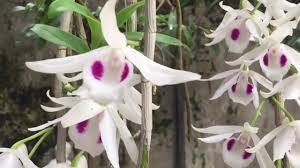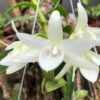# Exploring Phalaenopsis Orchids in Commercial Farms

## Table of Contents
1. **Introduction**
2. **Understanding Phalaenopsis Orchids**
– 2.1. Characteristics and Varieties
– 2.2. Growing Requirements
3. **The Commercial Orchid Industry**
– 3.1. Global Market Overview
– 3.2. Major Producing Countries
4. **Cultivation Techniques in Commercial Farms**
– 4.1. Propagation Methods
– 4.2. Growing Conditions
– 4.3. Fertilization and Nutrient Management
– 4.4. Pest and Disease Management
5. **Sustainability Practices in Orchid Farming**
– 5.1. Environmental Impact
– 5.2. Organic Farming Approaches
– 5.3. Certification and Standards
6. **Economic Impact of Phalaenopsis Orchids**
– 6.1. Job Creation and Community Development
– 6.2. Export Potential
7. **Trends and Innovations in Orchid Farming**
– 7.1. Technology in Cultivation
– 7.2. Hybridization and Breeding Programs
8. **Challenges Facing the Commercial Orchid Industry**
– 8.1. Market Competition
– 8.2. Climate Change and Its Effects
9. **The Future of Phalaenopsis Orchids in Commercial Farms**
10. **Conclusion**
11. **FAQs**
—
## 1. Introduction
Phalaenopsis orchids, commonly known as moth orchids, are one of the most popular and commercially viable types of orchids cultivated worldwide. Their stunning beauty, diverse colors, and long-lasting blooms make them a favorite among consumers, leading to a booming commercial industry. This article explores the cultivation of Phalaenopsis orchids in commercial farms, focusing on their characteristics, growing requirements, economic impact, sustainability practices, and future prospects.
—
## 2. Understanding Phalaenopsis Orchids
### 2.1. Characteristics and Varieties
Phalaenopsis orchids are known for their distinctive flower shapes, resembling moths in flight. They typically feature broad, flat petals and come in a wide range of colors, including white, pink, yellow, purple, and combinations of these shades. There are several popular varieties of Phalaenopsis orchids, including:
– **Phalaenopsis amabilis**: Known for its pure white flowers, this species is often called the “Moon Orchid.”
– **Phalaenopsis equestris**: This variety features smaller flowers with pink hues and is prized for its compact growth habit.
– **Phalaenopsis violacea**: Recognized for its fragrant flowers, this species is often sought after for its unique scent.
### 2.2. Growing Requirements
Phalaenopsis orchids thrive in warm, humid environments. They require specific growing conditions, including:
– **Temperature**: Ideal temperatures range from 70°F to 85°F (21°C to 29°C) during the day and 60°F to 70°F (16°C to 21°C) at night.
– **Humidity**: These orchids prefer humidity levels between 50% and 70%.
– **Light**: They require bright, indirect light, making them suitable for indoor growing with filtered sunlight.
—
## 3. The Commercial Orchid Industry
### 3.1. Global Market Overview
The global orchid market has experienced significant growth in recent years, with Phalaenopsis orchids leading the way in popularity and sales. They are widely sold in flower shops, supermarkets, and online marketplaces. The increasing demand for ornamental plants and flowers has fueled the expansion of the orchid industry, making it a lucrative sector within horticulture.
### 3.2. Major Producing Countries
Several countries are prominent in the production of Phalaenopsis orchids, including:
– **The Netherlands**: Renowned for its advanced horticultural techniques, the Netherlands is one of the largest exporters of orchids in the world.
– **Taiwan**: Taiwan is a major player in the orchid industry, known for its innovative breeding programs and high-quality Phalaenopsis varieties.
– **Thailand**: With its favorable climate and rich biodiversity, Thailand has become a significant producer of orchids, catering to both local and international markets.
—
## 4. Cultivation Techniques in Commercial Farms
### 4.1. Propagation Methods
Commercial orchid farms use various propagation techniques to produce Phalaenopsis orchids:
– **Seed Propagation**: Although slow, this method involves sowing seeds in sterile media to grow new plants.
– **Tissue Culture**: This is the most common method in commercial settings, allowing for the rapid multiplication of orchids under sterile conditions. Tissue culture ensures uniformity and disease-free plants.
### 4.2. Growing Conditions
Creating optimal growing conditions is crucial for successful orchid cultivation. Commercial farms utilize greenhouses equipped with temperature and humidity controls to maintain an ideal environment. Hydroponic systems and specialized growing media (e.g., bark, sphagnum moss) are commonly used to support plant growth.
### 4.3. Fertilization and Nutrient Management
Proper fertilization is essential for healthy orchid growth. Commercial farms typically use balanced fertilizers formulated specifically for orchids. Nutrient management involves regular feeding schedules and monitoring of nutrient levels to ensure plants receive adequate nourishment.
### 4.4. Pest and Disease Management
Preventing and managing pests and diseases is a critical aspect of commercial orchid farming. Common pests include aphids, mealybugs, and spider mites. Integrated pest management (IPM) strategies are employed, which may include:
– **Cultural Control**: Implementing practices that reduce pest populations, such as proper sanitation and plant rotation.
– **Biological Control**: Utilizing natural predators or beneficial insects to manage pest populations.
– **Chemical Control**: Applying pesticides judiciously when necessary, ensuring compliance with safety regulations.
—
## 5. Sustainability Practices in Orchid Farming
### 5.1. Environmental Impact
The commercial cultivation of Phalaenopsis orchids has raised concerns regarding its environmental impact. Deforestation and habitat destruction for agricultural expansion can threaten biodiversity. Sustainable practices are vital to minimize these impacts.
### 5.2. Organic Farming Approaches
Many commercial orchid farms are adopting organic farming practices to meet consumer demand for environmentally friendly products. Organic methods include:
– **Natural Pest Control**: Utilizing beneficial insects and organic pesticides to manage pests.
– **Organic Fertilizers**: Using compost and other natural fertilizers to nourish plants without synthetic chemicals.
### 5.3. Certification and Standards
Various certification programs, such as USDA Organic and Fair Trade, encourage sustainable practices in orchid farming. These certifications help farmers market their products to environmentally conscious consumers while promoting ethical labor practices.
—
## 6. Economic Impact of Phalaenopsis Orchids
### 6.1. Job Creation and Community Development
The orchid industry generates employment opportunities in various sectors, including cultivation, distribution, and retail. Commercial farms often employ local workers, contributing to community development and economic stability.
### 6.2. Export Potential
Phalaenopsis orchids are highly sought after in international markets, making them a significant export commodity for many producing countries. Exporting orchids not only boosts national economies but also enhances global trade relationships.
—
## 7. Trends and Innovations in Orchid Farming
### 7.1. Technology in Cultivation
Advancements in technology are transforming orchid farming. Innovations such as automated climate control systems, LED lighting, and data analytics for monitoring plant health are becoming increasingly common in commercial farms. These technologies enhance efficiency and reduce resource consumption.
### 7.2. Hybridization and Breeding Programs
Commercial farms are actively engaged in hybridization and breeding programs to develop new Phalaenopsis varieties. These efforts aim to create orchids with unique colors, shapes, and improved resilience to pests and diseases. Continuous breeding innovations contribute to the overall success of the industry.
—
## 8. Challenges Facing the Commercial Orchid Industry
### 8.1. Market Competition
The orchid market is highly competitive, with numerous producers vying for consumer attention. Differentiating products through unique varieties, quality, and branding is essential for commercial farms to succeed.
### 8.2. Climate Change and Its Effects
Climate change poses significant challenges to the orchid industry, affecting growing conditions and increasing the risk of extreme weather events. Farmers must adapt to these changes by implementing sustainable practices and exploring new growing strategies.
—
## 9. The Future of Phalaenopsis Orchids in Commercial Farms
The future of Phalaenopsis orchids in commercial farms looks promising, with continued growth anticipated in both local and global markets. Factors that will shape the industry include:
– **Consumer Trends**: An increasing preference for ornamental plants and sustainable products will drive demand for Phalaenopsis orchids.
– **Technological Advances**: Ongoing innovations in cultivation techniques and technology will enhance efficiency and productivity.
– **Sustainability Initiatives**: A growing emphasis on sustainable practices will shape the future of orchid farming, ensuring that environmental and social responsibilities are prioritized.
—
## 10. Conclusion
Phalaenopsis orchids play a vital role in the commercial flower industry, offering beauty and economic benefits. As consumer demand continues to rise, it is crucial for commercial farms to adopt sustainable practices, embrace technological innovations, and overcome challenges to ensure the longevity of this valuable industry. By understanding the intricacies of Phalaenopsis orchid cultivation in commercial farms, stakeholders can make informed decisions that contribute to a thriving, sustainable future for both the orchids and the communities that cultivate them.
—
## 11. FAQs
**1. What are Phalaenopsis orchids?**
Phalaenopsis orchids, also known as moth orchids, are popular flowering plants characterized by their unique flower shapes and vibrant colors.
**2. What are the primary methods of propagating Ph
alaenopsis orchids?**
The main methods of propagation include seed propagation and tissue culture, with tissue culture being the most common in commercial settings.
**3. How do commercial farms maintain optimal growing conditions for orchids?**
Commercial farms use greenhouses with controlled temperature and humidity, along with specialized growing media to create optimal conditions for orchid growth.
**4. What challenges does the orchid industry face?**
Challenges include market competition, climate change impacts, and the need for sustainable practices to minimize environmental impact.
**5. How can consumers support sustainable orchid farming?**
Consumers can support sustainable practices by purchasing organically grown orchids and choosing products certified by reputable environmental standards.

